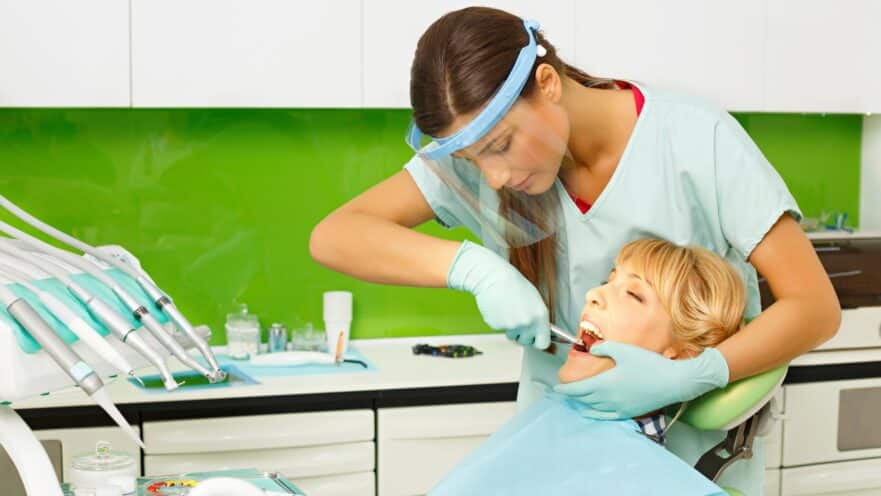Tooth extractions, sometimes referred to as “pulling a tooth,” are a common dental procedure performed by dentists to remove a tooth from its socket in the jawbone. While dentists always strive to preserve natural teeth, extractions become necessary in certain situations. This blog post will explore the reasons why you might need a tooth extraction, what the procedure entails, and what to expect during recovery.
Reasons for Tooth Extraction
There are several reasons why a dentist might recommend a tooth extraction. Here are three of the most common:
- Severe Tooth Decay or Damage: If a tooth is extensively decayed or fractured beyond repair through fillings, crowns, or root canals, extraction may be the best course of action. This can prevent infection and further damage to surrounding teeth.
- Impacted Teeth: Wisdom teeth are the most common type of impacted teeth, meaning they are unable to erupt properly due to lack of space in the jaw. Impacted teeth can cause pain, infection, and damage to surrounding teeth, necessitating extraction.
- Periodontal Disease: In severe cases of gum disease (periodontitis), the bone and tissue supporting the teeth deteriorate. This can lead to loose teeth that require extraction to prevent further complications and promote gum health.
What to Expect During a Tooth Extraction
A tooth extraction can be a simple or surgical procedure depending on the complexity of the case. Here’s a general overview of what you might experience:
- Consultation and X-rays: Before scheduling the extraction, your dentist will discuss your medical history, perform a thorough oral examination, and take X-rays to determine the tooth’s position and root structure.
- Anesthesia: Local anesthesia is typically used to numb the area around the tooth, ensuring minimal discomfort during the procedure. In some cases, general anesthesia might be necessary, especially for complex extractions or patients with dental anxiety.
- The Extraction: For a simple extraction, the dentist will loosen the tooth with instruments and then gently remove it with forceps. Surgical extractions might involve making an incision in the gum tissue and removing some bone to access the tooth before extraction.
- Aftercare: Following the extraction, your dentist will provide specific instructions on caring for the extraction site to promote healing and prevent infection. These may include applying gentle pressure with gauze to control bleeding, maintaining good oral hygiene, and avoiding strenuous activity.
Recovery After a Tooth Extraction
Healing after a tooth extraction typically takes several days to a few weeks. Here are some tips to promote a smooth recovery:
- Pain Management: Your dentist will prescribe medication to manage any discomfort you might experience after the procedure.
- Bleeding: Minor bleeding is expected after an extraction. Apply gentle pressure with gauze as instructed by your dentist.
- Swelling: Swelling around the extraction site is also common. You can apply a cold compress to the area to reduce inflammation.
- Diet: Stick to soft foods like yogurt or applesauce for the first few days after the extraction. Gradually reintroduce solid foods as your mouth heals.
- Oral Hygiene: Maintain good oral hygiene by gently brushing your teeth and rinsing with salt water solution as directed by your dentist.
Tooth extractions are a safe and effective procedure to address various dental problems. If your dentist recommends an extraction, rest assured it’s the best course of action for your long-term oral health. By understanding the reasons for extraction, and the procedure itself, and following proper aftercare instructions, you can ensure a smooth recovery and maintain a healthy smile.
Remember, this blog post is for informational purposes only and should not be a substitute for professional dental advice. If you have any concerns about your teeth or suspect you might need a tooth extraction, schedule an appointment with your dentist for a proper diagnosis and treatment plan.
